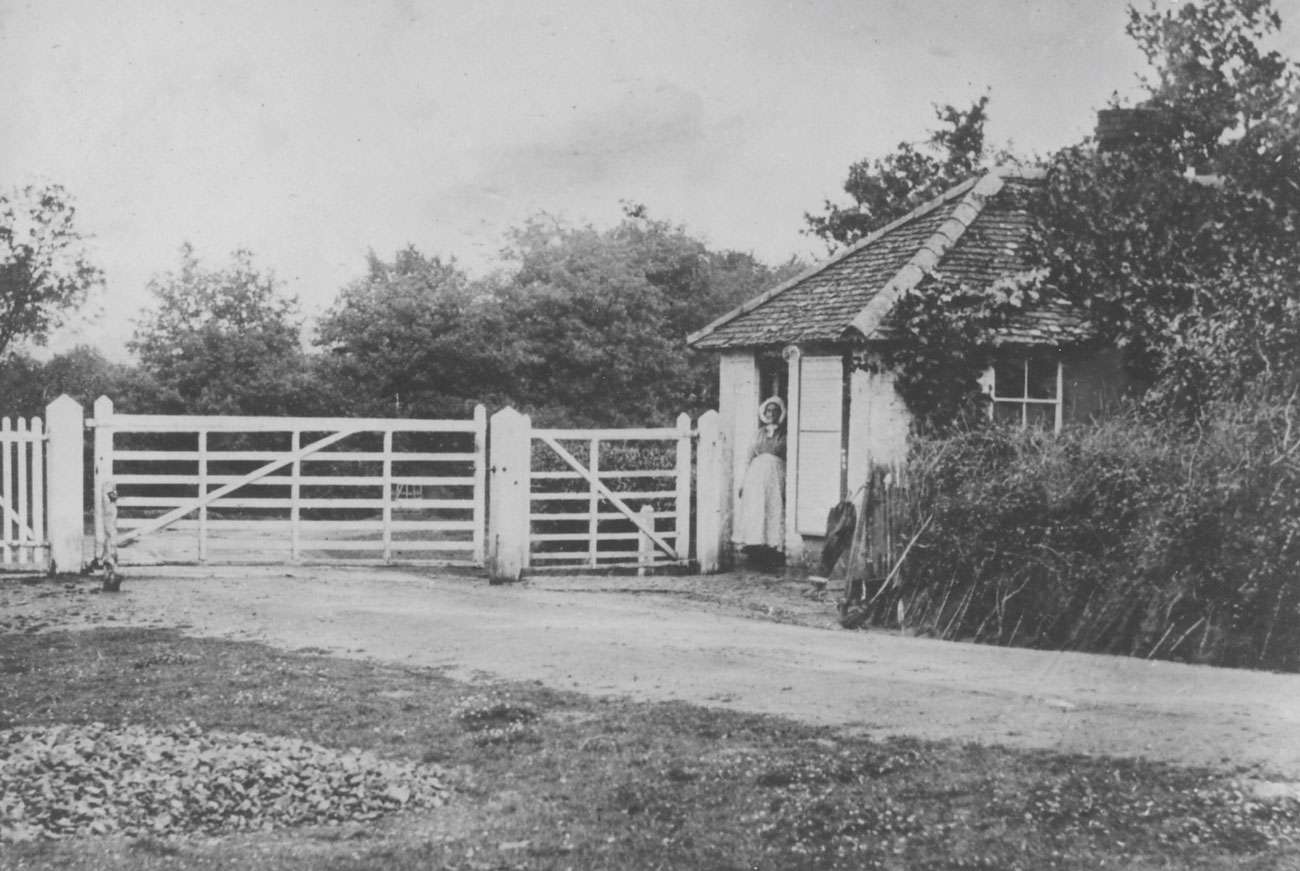
Not Cranleigh’s toll-house, but the one at Gaston Gate, which the Cranleigh gate would have resembled (courtesy of Michael Miller)
The Toll-house and Toll-gate
Roads around Cranleigh 200 years ago were little more than tracks, causing problems for would-be travellers or farmers needing to transport produce or stock to markets. In fact, the condition of the roads guaranteed that most people scarcely ventured out of the village.
One remedy was for a group of wealthy people to invest in constructing a good-quality road, known as a turnpike road, then recoup their money and make a steady profit by levying charges for using it. So toll-gates were set up across the turnpike road at intervals, with a resident gatekeeper living in a toll-house. When a traveller approached, the gatekeeper would come out and open the gate, on payment of the appropriate toll. And, yes, Cranleigh had its own toll-gate for 50-60 years in the nineteenth century.
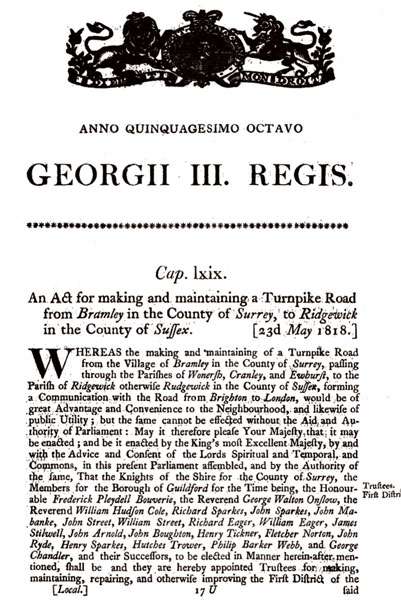
Cranleigh’s Turnpike Road Act, 1818 (from C. Budgen, Cranleigh: a History)
An Act of Parliament had to be obtained for each such turnpike road. Cranleigh’s Act specified that the projected road should go from Bramley, through Wonersh, Cranleigh and Ewhurst, to Rudgwick. From there, another section would link it to the London to Brighton road. Royal assent was given on May 23rd 1818 and the investors drew up a list of financial pledges on June 6th. This list is in the Surrey History Centre, and contains the names of several Cranleigh men. The rector, the Rev. John Barbor Wolfe, pledged £300.
We know the position of Cranleigh’s toll-house from a sketch map of 1887, although it was no longer operating then. It was on the Common, opposite the present Natural Life Shop and Glamorous Nails. In 1930, some of its foundations could still be seen: perhaps a project for excavation? The line with a curve in it on the map close to the toll-house may have been a fence or wall across the Common, and it may be the ditch that is still there and seems to follow the same line.
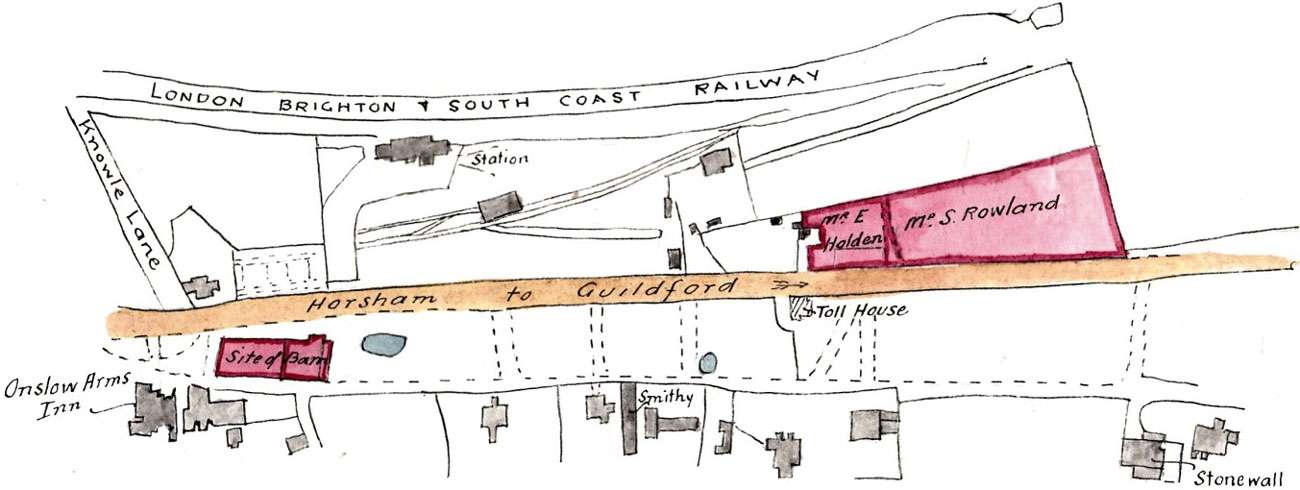
Sketch-map of 1887 from the Frank Warren papers (courtesy of Mrs Catherine Ferrier)
No picture of the toll-gate is known, but it was probably similar to that at Gaston Gate, which is still there, by the roundabout, now incorporated into a bungalow. There were four toll-gates on the Bramley to Rudgwick stretch of road – at Gaston Gate, Cranleigh, Cox Green and Rudgwick.
We know a little from the nineteenth-century Censuses about four of the Cranleigh toll-gate keepers. Henry Hersey, aged 40, was here in 1841 with his wife Sarah and two young daughters. He is described as an agricultural labourer, so perhaps Sarah attended to the gate. John Snatt, 70, harness-maker, was here in 1851: maybe his craft enabled him to look after the gate while working. William Redman, 56, is called tax-collector in 1861 and William Stemp, 36, who figures in 1871, is another ag. lab. and tax-collector – or perhaps wife Hannah looked after the gate. By 1881 the toll-gate had been removed.
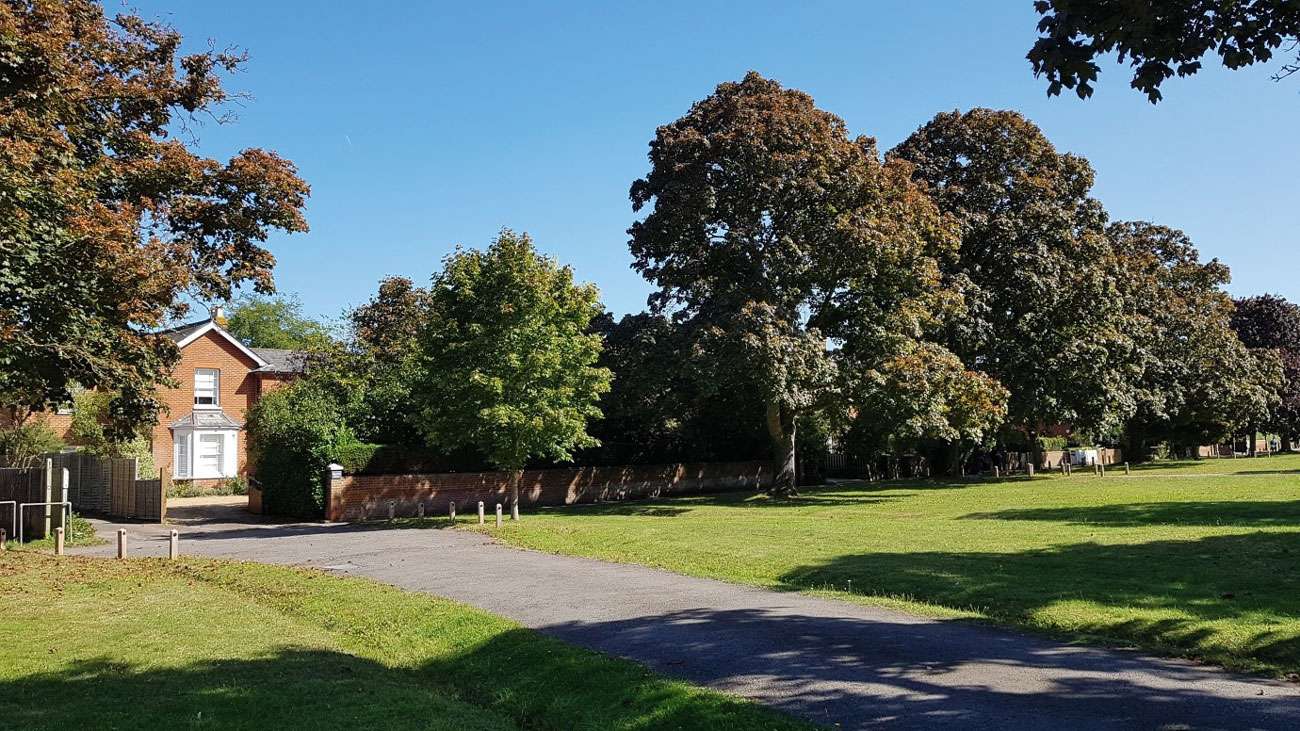
Stanford House (The Cottage) in 2019 and one of its exits to the main road. A line of posts on the right marks the second exit.
It cost 2d for the toll-keeper to let a horse through; a cart, a gig and a horse team were each charged 6d. Sheep were five for 1d. Not surprisingly, these charges were very unpopular, and people went to considerable lengths to avoid them by by-passing the gate. The house on the Common called ‘The Cottage’ (now ‘Stanford House’), which was in line with the toll-gate, had two routes from its gate which the owner’s gig could take, depending on whether he was heading east or west. They are still there. Various ditches on the Common and cricket field were probably dug to frustrate would-be toll-avoiders.

Part of a painting of the Obelisk by Edward Hassall in 1830 (Lambeth Archives)
The investors in the turnpike road never recouped their outlay, as the road never made a profit. Some of the pledged subscriptions did not materialise.
Besides toll-avoidance, the road needed constant loads of stone and gravel as they disappeared into Cranleigh’s bottomless clay. When the railway opened in 1865, it spelt the end of any hope of a profit, as it followed much the same route as the road. The Highways Act of 1878 renamed turnpike roads as ‘main roads’ and the Local Government Act of 1888 transferred responsibility for their maintenance to the new County Councils.
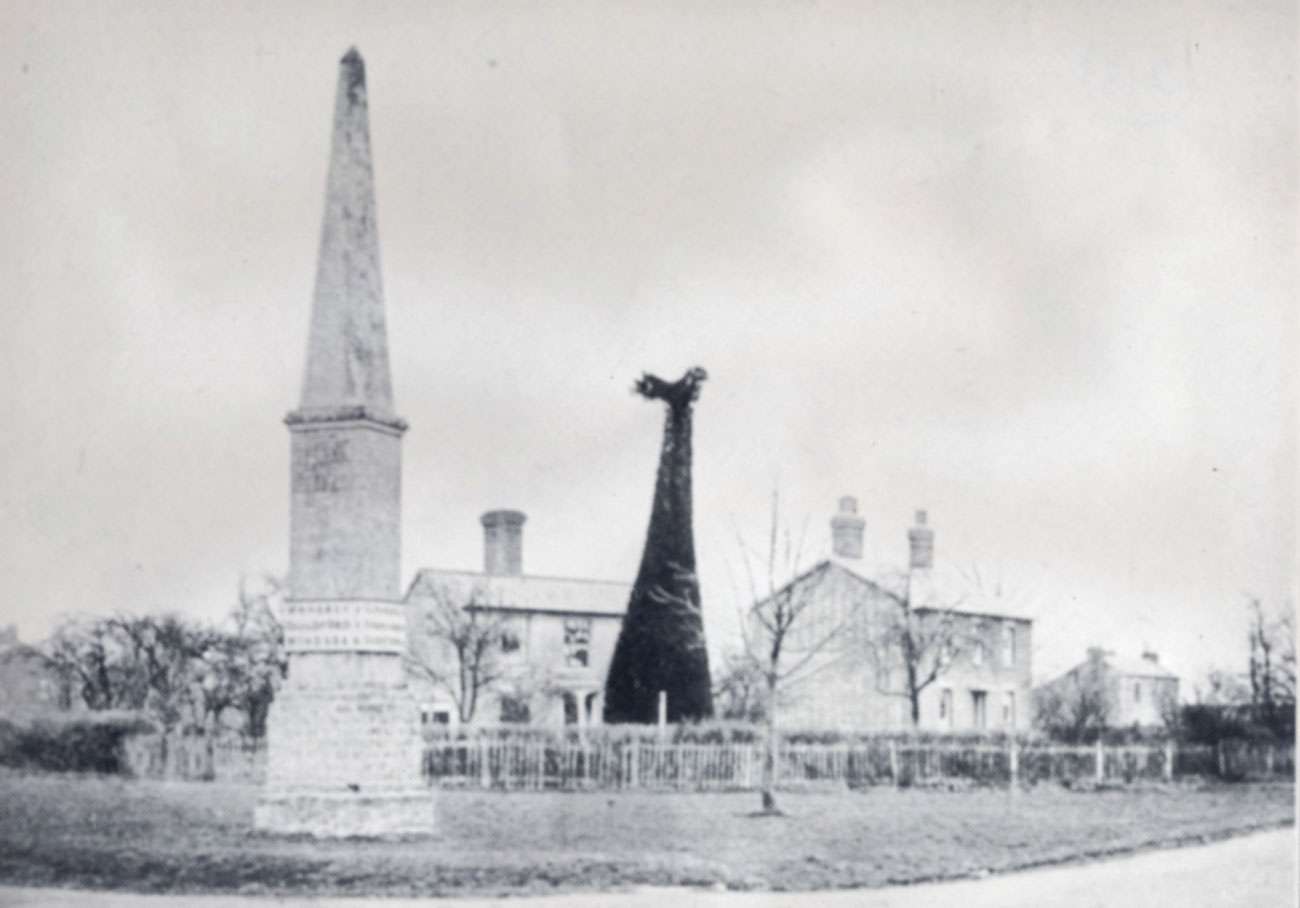
The Obelisk in its familiar form around 1850: the extraordinary Yew tree has given its name to the later Yew Tree House and Yew Tree Veterinary Centre
There is still is a reminder in Cranleigh of the old turnpike road – the Obelisk. This was set up to commemorate the road’s construction, with plates showing the places that could be reached by it. Curiously, they show the towns the traveller has come from. The most likely person to have put it up is Cranleigh’s surgeon John Ellery, who lived at Broadoak close by. Originally the Obelisk was surmounted by a small pineapple.
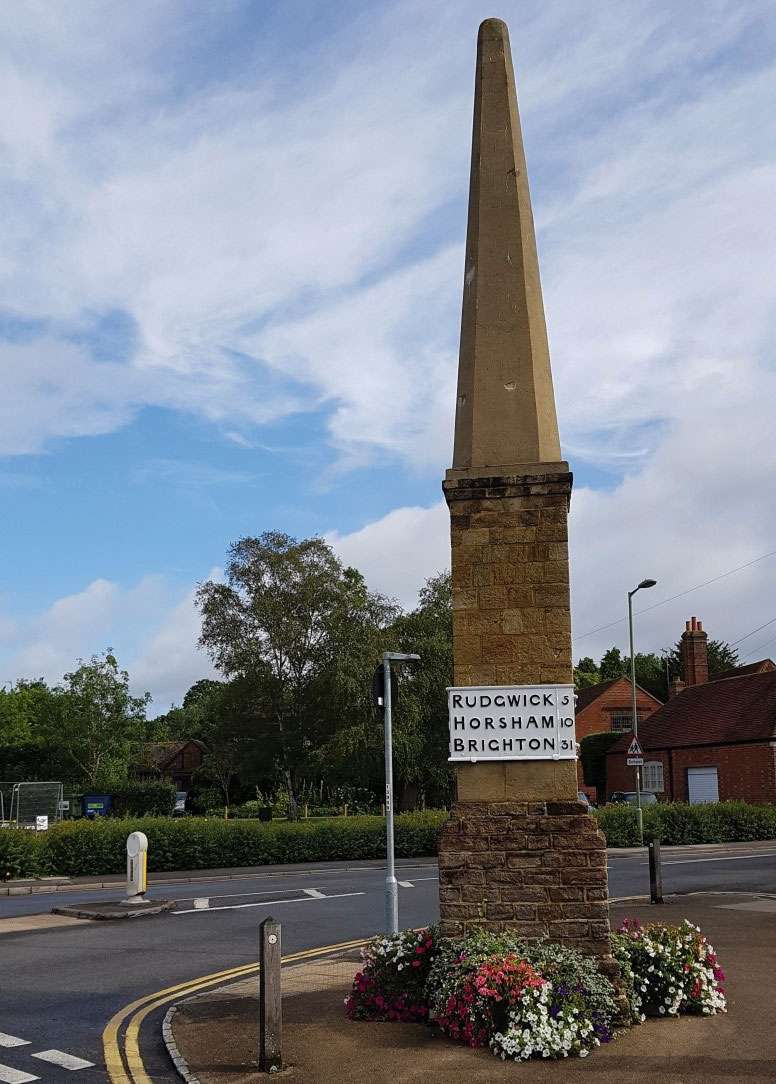
The present day Cranleigh Obelisk still commemorates the Turnpike Road, which the toll-gate served
(Grateful thanks to Beni Lee for her suggestions on this article.)
The Cranleigh History Society meets on the 2nd Thursday of each month at 8.00pm in the Band Room. The next meeting will be on Thursday November 14th, when Andrew Coates will speak on ‘Looking for Life on Mars with the ExoMars 2020 rover’.











